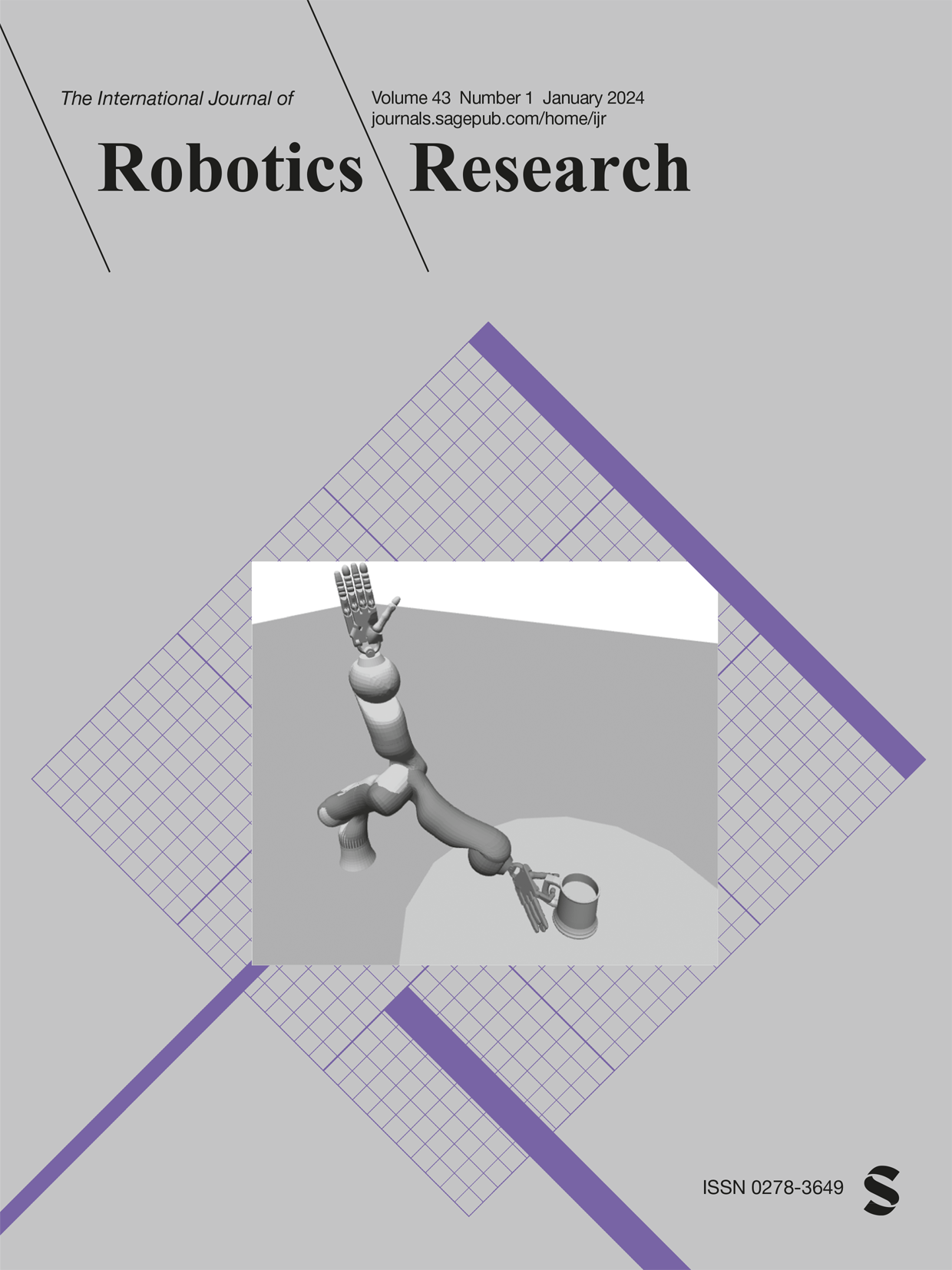证明运动规划不可行性的采样和学习框架
IF 5
1区 计算机科学
Q1 ROBOTICS
引用次数: 2
摘要
我们提出了一种基于学习的方法来证明运动学运动规划问题的不可行性。基于采样的运动规划器在高维空间中是有效的,但只是概率完备。因此,如果没有计划,这些规划者就不能提供明确的答案,这对于高级场景(如任务运动规划)是很重要的。我们将基于多向采样的规划(如PRM)过程中产生的数据应用于机器学习方法来构建不可行性证明。不可行性证明是位形空间障碍区的封闭流形,它将起点和目标分隔成自由位形空间中不相连的部分。我们使用常见的机器学习技术训练流形,然后将流形三角化成多面体,以证明障碍物区域的包容性。在构型空间优化的超参数性和鲁棒性假设下,输出要么是不可行性证明,要么是极限运动方案。我们演示了高达4自由度配置空间的证明结构。该算法的很大一部分是可并行的,这提供了解决高维配置空间的潜力。本文章由计算机程序翻译,如有差异,请以英文原文为准。
A sampling and learning framework to prove motion planning infeasibility
We present a learning-based approach to prove infeasibility of kinematic motion planning problems. Sampling-based motion planners are effective in high-dimensional spaces but are only probabilistically complete. Consequently, these planners cannot provide a definite answer if no plan exists, which is important for high-level scenarios, such as task-motion planning. We apply data generated during multi-directional sampling-based planning (such as PRM) to a machine learning approach to construct an infeasibility proof. An infeasibility proof is a closed manifold in the obstacle region of the configuration space that separates the start and goal into disconnected components of the free configuration space. We train the manifold using common machine learning techniques and then triangulate the manifold into a polytope to prove containment in the obstacle region. Under assumptions about the hyper-parameters and robustness of configuration space optimization, the output is either an infeasibility proof or a motion plan in the limit. We demonstrate proof construction for up to 4-DOF configuration spaces. A large part of the algorithm is parallelizable, which offers potential to address higher dimensional configuration spaces.
求助全文
通过发布文献求助,成功后即可免费获取论文全文。
去求助
来源期刊
CiteScore
22.20
自引率
0.00%
发文量
34
审稿时长
6-12 weeks
期刊介绍:
The International Journal of Robotics Research (IJRR) has been a leading peer-reviewed publication in the field for over two decades. It holds the distinction of being the first scholarly journal dedicated to robotics research.
IJRR presents cutting-edge and thought-provoking original research papers, articles, and reviews that delve into groundbreaking trends, technical advancements, and theoretical developments in robotics. Renowned scholars and practitioners contribute to its content, offering their expertise and insights. This journal covers a wide range of topics, going beyond narrow technical advancements to encompass various aspects of robotics.
The primary aim of IJRR is to publish work that has lasting value for the scientific and technological advancement of the field. Only original, robust, and practical research that can serve as a foundation for further progress is considered for publication. The focus is on producing content that will remain valuable and relevant over time.
In summary, IJRR stands as a prestigious publication that drives innovation and knowledge in robotics research.

 求助内容:
求助内容: 应助结果提醒方式:
应助结果提醒方式:


